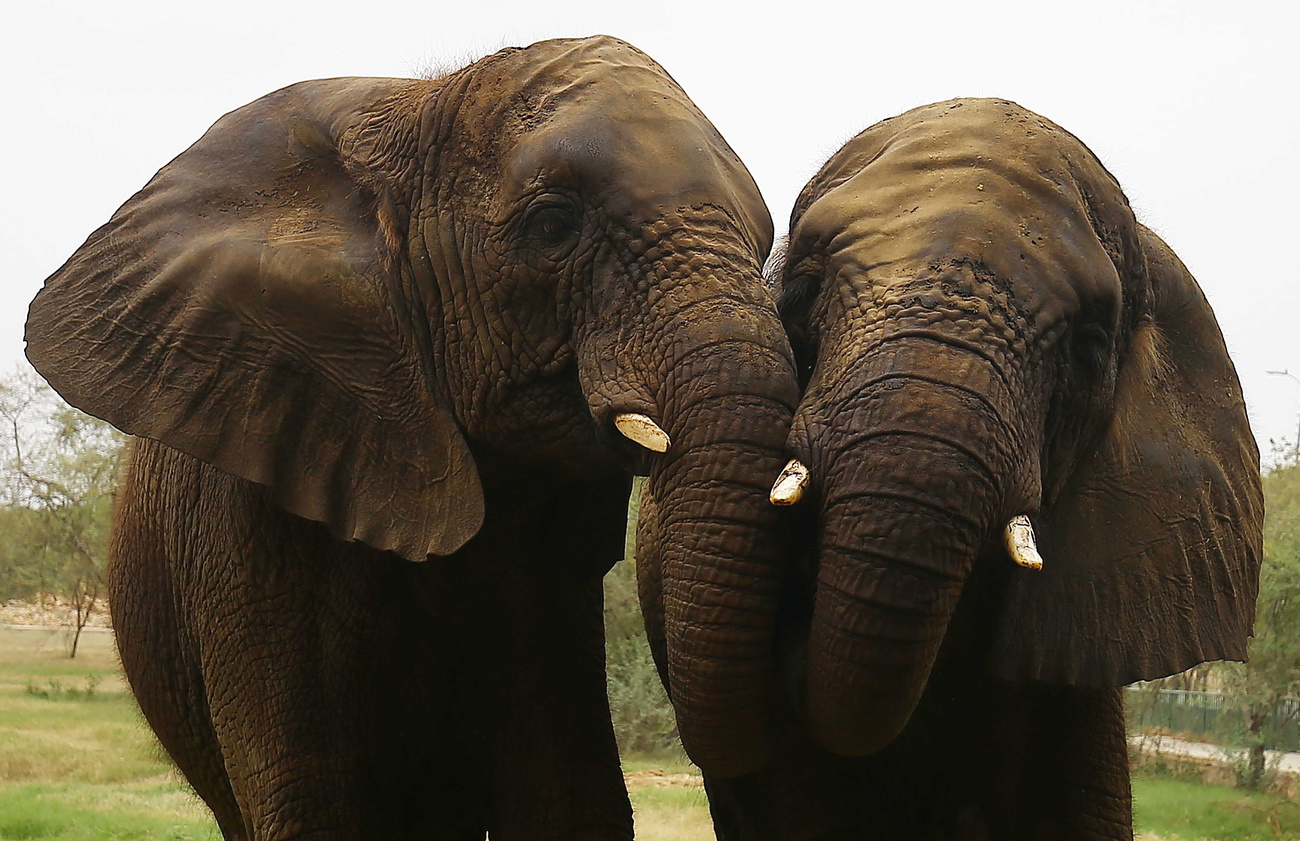Elephant trunks inspire robotics team in Switzerland
Swiss robotics experts are drawing inspiration from the complex movements of an elephant’s trunk.

Researchers at the University of Geneva (UNIGE) analysed this highly versatile nasal organ – which can manipulate a blade of grass as well as carry loads weighing up to 270kg – and concluded it could serve as a model for robotics.
To analyse the elephant’s trunk, the team led by Michel Milinkovitch, a professor in the department of genetics and evolution, used techniques developed for the film industry, according to a statement by the university, published on Monday.
Reflective markers were placed along the trunk of two African elephants and recorded their movements in three dimensions with the help of infrared cameras. These same markers were used to bring to life the character of Gollum in The Lord of the Rings trilogy.
A language made of 20 movements
The analysis showed that elephants use about 20 movements to move their trunks. This basic “toolbox” produces complex behaviour, the researchers note, akin to “a complex sentence [that] is made up of the combination of simple words”.
Sometimes, elephants use suction to perform an action, other times, the suction is associated with the winding needed to strengthen the grip. It all depends on the object to be grasped.
Movements to reach an object to the side of the elephant are “very particular”. The trunk, an organ without bones, forms rigid segments connected by virtual joints, “giving the impression of an elbow or a wrist”.
Unprecedented precision
The multidisciplinary UNIGE team is credited with capturing the anatomy of the trunk of African and Asian elephants with unprecedented precision. By analysing the data, “the scientists were able to establish a close link between the muscular system of the trunk and its biomechanical functions”.
For the UNIGE, these results will serve as the basis for the development of a new concept of flexible robotic manipulation that would allow “these bio-inspired robots” to detect, reach, grasp, manipulate and release a variety of objects of different shapes and sizes.
The researchers’ results are published in the scientific journal Current Biology.

In compliance with the JTI standards
More: SWI swissinfo.ch certified by the Journalism Trust Initiative
You can find an overview of ongoing debates with our journalists here. Please join us!
If you want to start a conversation about a topic raised in this article or want to report factual errors, email us at english@swissinfo.ch.